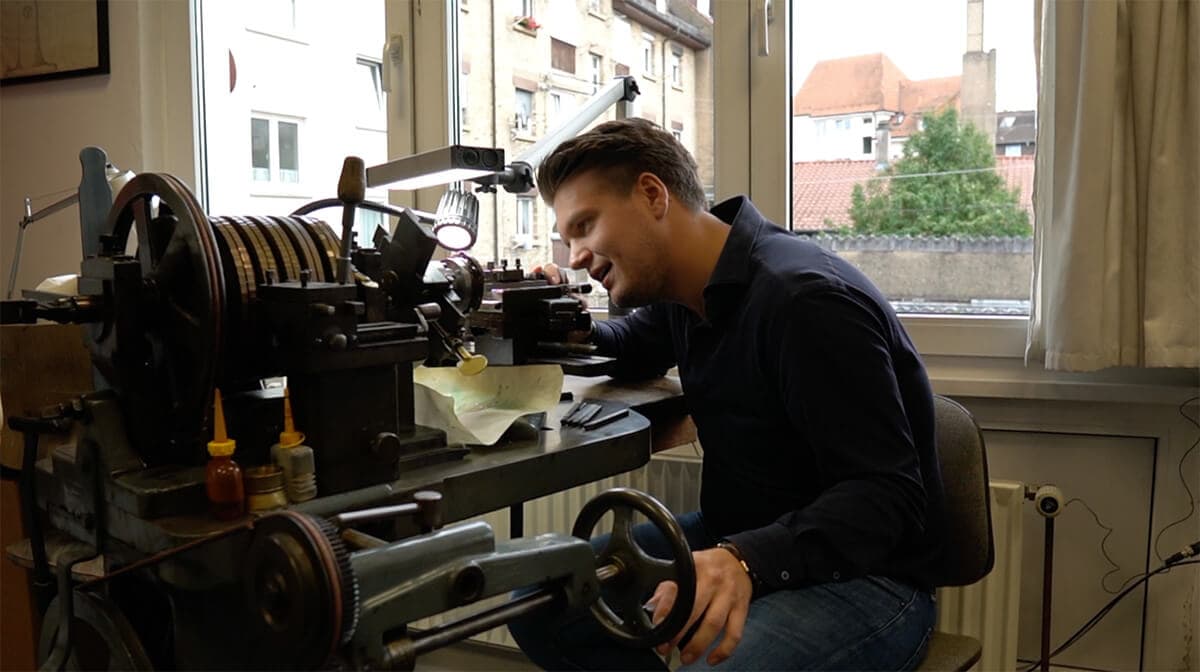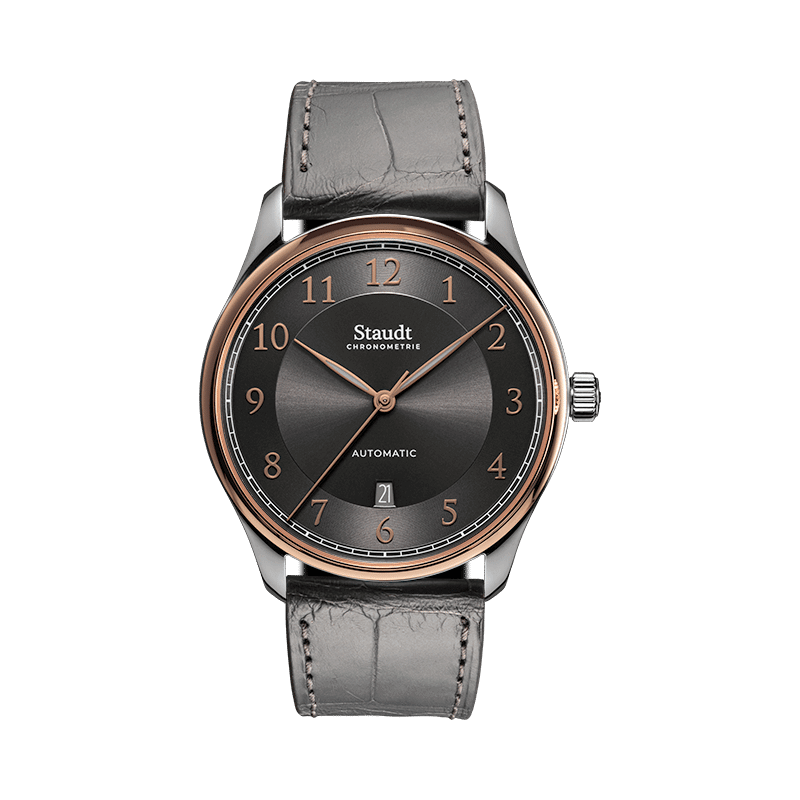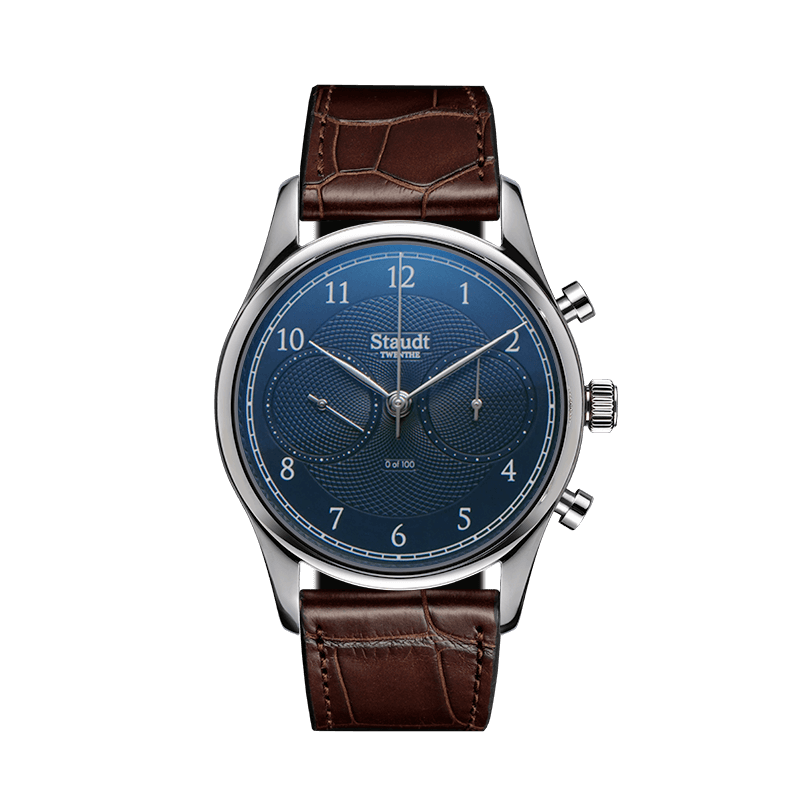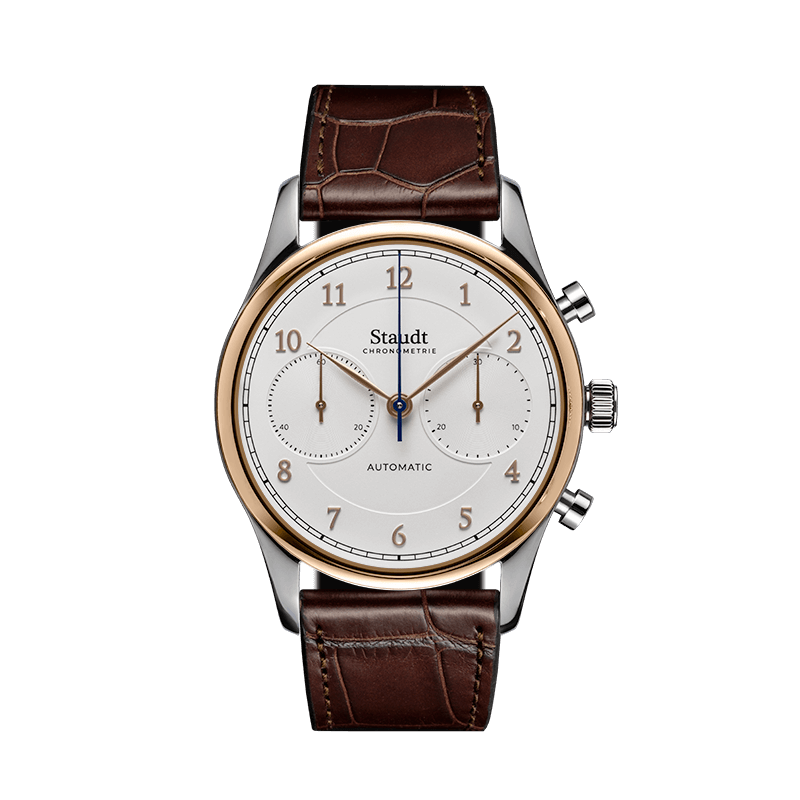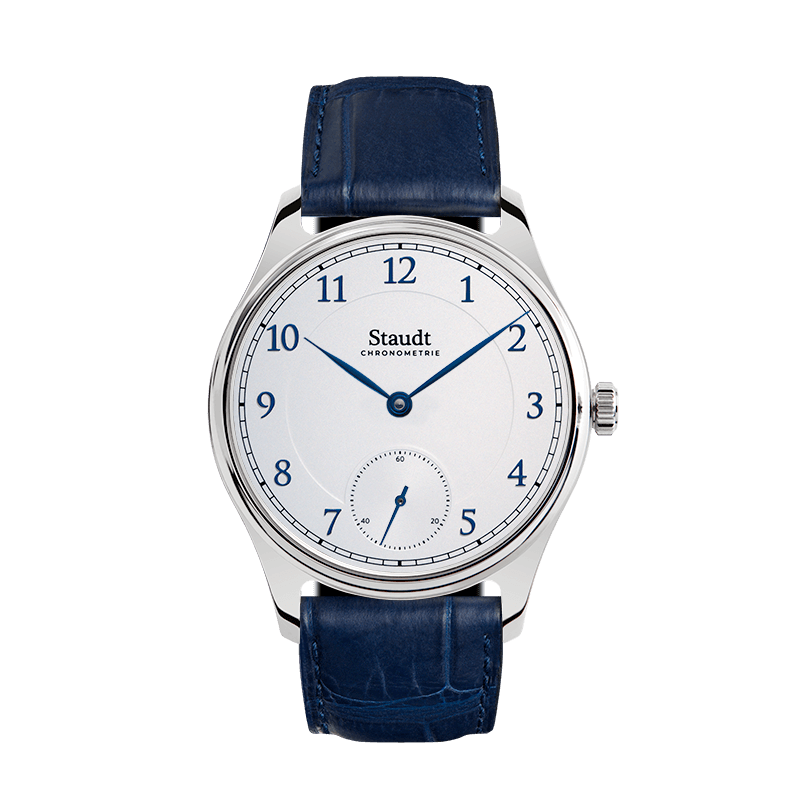A king's technique.
Guilloche is a geometric pattern that has been used to decorate wood and ivory since the 16th century. The pattern originally symbolised the position of the sovereign, everything revolved around the king. Many kings, therefore, learned this craft on a rose engine, as shown below. It was only in the 18th century that this technique was used for the first time on the dial of a watch by Abraham-Louis Breguet. Today there are only a few craftsmen who have mastered this special technique.
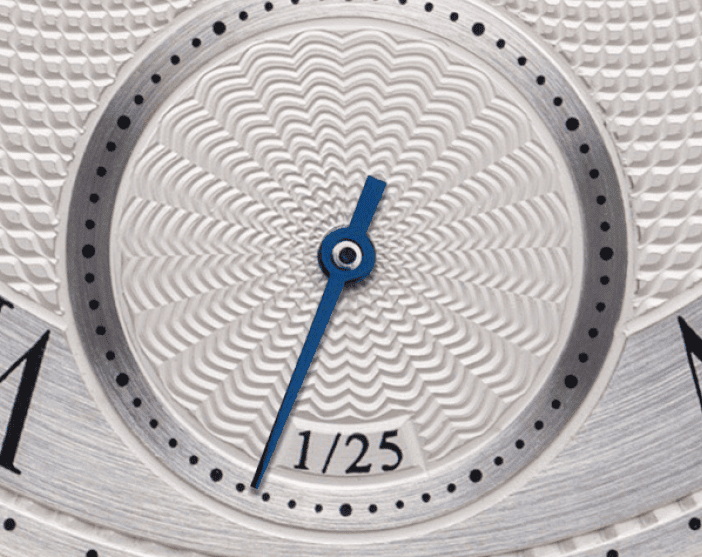
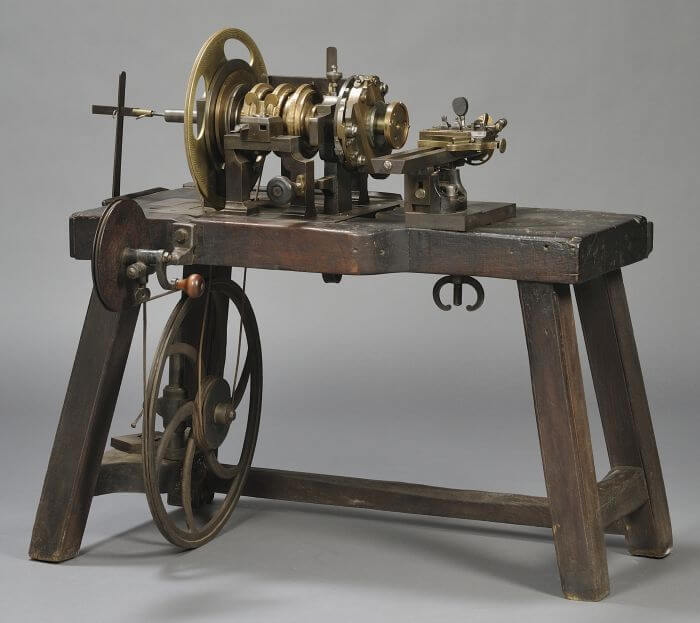
The rose engine.
The rose engine is a special lathe with the peculiarity that it is not the milling cutter that moves over the dial, but the other way round. The dial is fixed in lacquer on a shaft with several round disc-shaped rosettes with 72 notches. The shaft is tensioned by a large spring, and the notches in the rosettes allow the entire shaft to slide back and forth when turned. A hand-carved cutting tool transfers the movement of the axis to the solid silver dial. Engraving a single dial takes about 9 hours.
Frosting
The guilloche dial is held over a flame, which brings out the fine silver, which is then captured by a chemical bath. This process is repeated seven times, to create a nice even layer. The dial is made of 925 Sterling Silver, which means that 925 of the 1000 particles consist of (fine) silver. The fine silver gives a white layer over the dial. Next, the rings in the dial are polished on a lathe. The blue Guilloche dials are galvanised. As a final step, the numbers, logo and minute rails are printed.
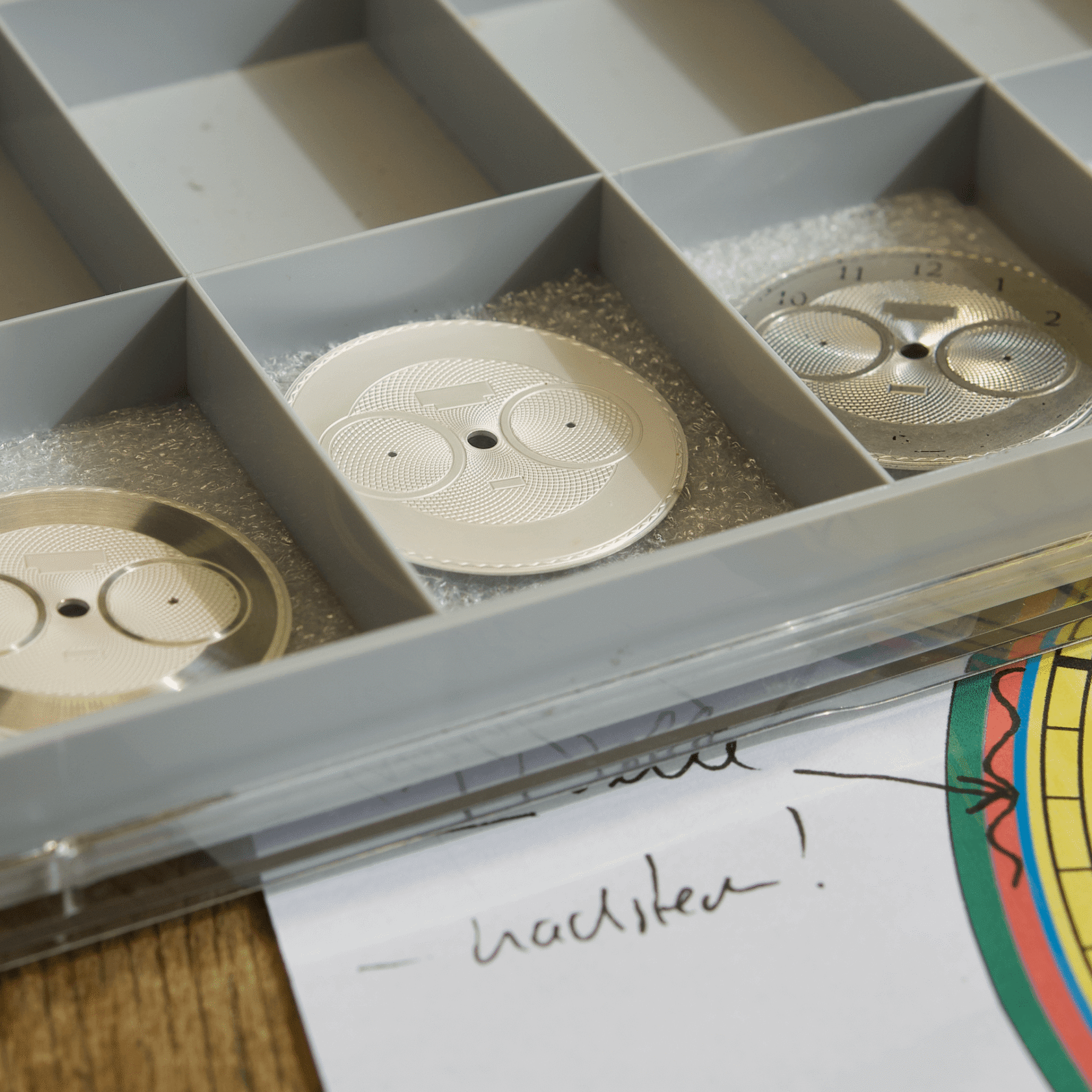

A life dedicated to Guilloche.
Jochen Benzinger is the only one in Germany that makes dials one a rose engine. He began his life as a hand engraver, but soon fell in love with this marvellous tool. See the video below to learn more about Jochen.
Yvo visits the studio.
Yvo took the trip to Pforzheim to visit the atelier of Jochen Benzinger, the artist that makes all of our Guilloche dials. Check out this video where he learns more about this wonderful technique.
